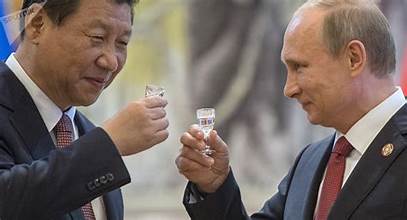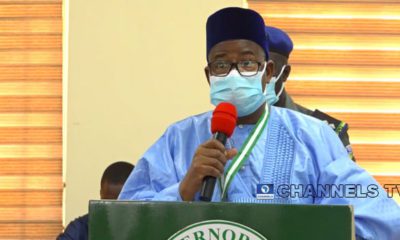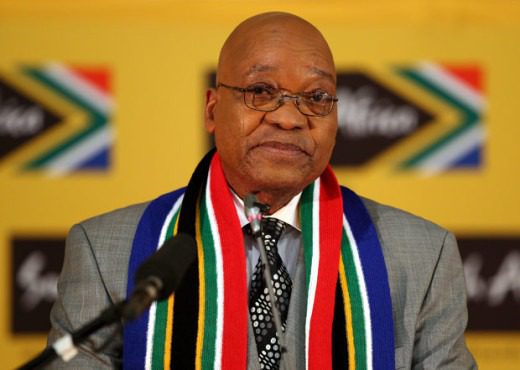Global Issues
Russia Praises China for its Comprehensive Multilateral Policy Approach and Global Achievements -By Kestér Kenn Klomegâh
China holds 17.7% of the world’s total wealth, the second largest share held by any country. It has the world’s largest banking sector, with assets of US$40 trillion and the world’s top 4 largest banks all being in China. In 2019, China overtook the United States as the home to the highest number of rich people in the world, according to the global wealth report by Credit Suisse.

Interestingly Russia is not celebrating its worldwide development achievements, but instead lavished praises on the People’s Republic of China. Russia shares common agenda on most regional and global issues with China. Both are staunch members of organizations such BRICS (Brazil, Russia, India, China and South Africa) and the United Nations Security Council. But the startling difference is that China has, over the years, indiscriminately, consistently and strategically set its steadfast footprints in multiple spheres across the world.
Russia certainly has borrow a few pages from China’s playbook, especially its policy approach which places an assertive emphasis, even current amid geopolitical tensions, on ‘cooperation’ rather than ‘confrontation’ and also China always ‘walks it talk’ with all its external partners, intensifies serious coordinated efforts in realizing all potential bilateral and multilateral goals in this changing global situation. Next, China regularly reviews its weaknesses and strengths, and adopt new measures in consolidating relations with foreign countries. Without much doubts, its success stories make China a noticeable fast-rising superpower in the emerging world.
China hosts leaders and about 30 organizations from around the world for a conference (Oct. 17-18, 2023) in Beijing to mark the 10-year anniversary of its global infrastructure-building scheme. Dubbed the “project of the century”, the Belt and Road Initiative (BRI) seeks to link China with markets and economies across Asia, Africa and Europe.
The concept was put forward by Chinese President Xi Jinping in 2013. Today, the Belt and Road initiative is the backbone of China’s foreign economic and foreign policy. There are high expectations that the milestone Beijing conference, President Xi Jinping may pitch a much broader future vision and set fresh goals aim at expanding geopolitical influence and ambitions as an alternative global leader to the United States.
It is worth to say that China is the most dynamic Asian country with the current unprecedented remarkable development-oriented initiative (BRI) which connects nearly 150 countries. In practical terms it is a remarkable achievement, with a focus on building a unique geostrategic position in the world. It has strong basis in Europe, Asia and Africa.
Belt and Road Initiative is what makes China today, under the leadership of President Xi Jinping, unique in building relations with other external countries, Russian President Vladimir Putin said in an assessment interview with Chinese media published on the Kremlin website.
“They are not only beneficial to the countries that receive some loans under this initiative. They are also beneficial to the People’s Republic of China, because it also receives products from the implementation of these projects and gets conditions for better and greater development. All this is done on the basis of mutual benefit,” he said.
The main advantage of China’s initiative is that “everything is done within the framework of finding not only acceptable solutions, but such projects and such ways of achieving a common goal that are acceptable to all,” Putin underscored in the interview.
Putin has downplayed the idea that China, through its Belt and Road projects in Central Asia, is competing for influence in a region that Russia has long considered its backyard. Russia’s idea of the Eurasian Economic Union, including the Greater Eurasia, fully coincides with China’ Belt and Road Initiative, and that the EAEU members have already invested US$24 billion in the Belt and Road Initiative, and the amount of investments has been growing alongside the new projects, according to his explanation.
Ruby Osman, a China expert at the Tony Blair Institute for Global Change, said the summit would give China a chance to showcase some of the global initiatives that Xi has launched over the past two years.
In particular, she pointed to the Global Development Initiative, a US$10 billion programme started in 2021 to promote “social and economic development” and other similar schemes focused on security and civilization. “These sort of mutually reinforcing initiatives are a way for, in Beijing’s eyes, to share Chinese governance ideals, to build consensus on Chinese norms and to start exporting elements of China’s development model,” Osman said.
Under the Belt and Road Initiative, a signature policy of President Xi Jinping, Chinese companies have built ports, roads, railways, power plants and other infrastructure around the world in a bid to boost trade and economic growth. But the massive Chinese development loans that funded the projects have also burdened some poorer countries with heavy debts.
At the International Monetary Fund (IMF) and the World Bank’s annual meetings held during the second week of October under the theme “Global Action, Global Impact” in Marrakesh, Morocco in North Africa, the banks pledged to bolster collaboration in accelerating an appreciable poverty-free world.
In addition, issues relating to external debts involving mostly developing countries, including from Africa were reviewed. Beijing has agreed to restructure loans owed by African countries such as Angola, Egypt, Nigeria, Zambia and a few others, in what appeared to be its latest demonstration of goodwill towards developing countries. In January 2021 Botswana became the 46th African nation to sign up to the Belt and Road Initiative (BRI).
China is building relations in all spheres, and developing badly-needed infrastructure intended to highlight Africa’s connectivity in terms of the economy, trade and industrialization across the continent. Major road infrastructure projects stretch to south and north Africa, such as Mozambique’s Maputo-Katembe bridge and Algeria’s Cherchell Ring Expressway Project.
Egypt has borrowed US$1.03 billion from China to finance various infrastructure projects. Egypt is seen as a vital part of China’s One Belt One Road initiative, due to its geographical position and close diplomatic relationship. Chinese companies were contracted for the Ethiopian-Djibouti’s new railway line, stretching more than 750 kilometres, among many others.
There are more and more Chinese initiatives to the above mentioned points. At the 15th BRICS summit – a platform hosted by South Africa in August 2023 with participation of African leaders, Xi Jinping made a number of concrete proposals including (i) China will launch the Initiative on Supporting Africa’s Industrialization and (ii) China will launch the Plan for Supporting Africa’s Agricultural Modernization.
According to the Johns Hopkins China Africa Research Initiative, East African countries alone have borrowed more than US$29 billion from China for various projects. Some countries like Djibouti, Kenya and Uganda have issued warnings over the ballooning debt, following the case of the Magampura Mahinda Rajapaksa Port transfer in Sri Lanka
In the former Soviet republics, the five countries of Central Asia (Kazakhstan, Kyrgyzstan, Tajikistan, Turkmenistan and Uzbekistan) are an important part of the land route of the Belt and Road Initiative (BRI).
As of April 2019, Kazakhstan invested about US$30 billion on infrastructure development, transport and logistics assets and competence as part of the Belt and Road Initiative. Due to Kazakhstan’s infrastructure modernization.
The Europe-China intercontinental highway now connects Europe and China through Russia and Kazakhstan. According to reports, Kazakhstan stands to receive a potential US$5 billion annually in transit fees from goods moving through it to other markets.
Even as Beijing may look to pitch its larger ambitions on the world stage this week, many delegations attending this week’s event will be more interested in enhancing their economic partnerships with the world’s second largest economy and getting a sense for how China will direct funding into the Belt and Road Initiative in the subsequent years.
The next stage of BRI will continue to create “high-quality” projects that can “better benefit people in partner countries,” Cong Liang, a top official with China’s National Development and Reform Commission, said at a press conference last week.
The shift will likely also mean a decrease in funding for big-ticket infrastructure projects, which have already been on the decline in recent years, experts say. “This also reflects the reality that the Chinese economy is slowing down – China doesn’t have as many resources to squander along BRI as it did during the first decade,” said Yun Sun, director of the China Program at the Stimson Center think tank in Washington.
Reports say more than 13,000-word policy document was released last month ahead of the conference, Beijing laid out the broad strokes of its international vision, warning the world “is at risk of plunging into confrontation and even war.” China “lights the path forward” with a plan to “promote solidarity and cooperation among all countries,” it said with limited specifics.
According to the Chinese government website, for the period from 2013 to 2022, trade turnover between China and the countries participating in the Belt and Road initiative amounted to US$19.1 trillion, with average annual growth of 6.4%. The total volume of investments exceeded US$380 billion, including China’s direct investments to participating countries to the tune of more than $240 billion.
In the first half of 2023 alone, trade turnover between China and Belt and Road countries grew by 9.8% year on year.
Despite its large population of 1.5 billion which many have considered as an impediment, China is emerging as the superpower over the United States. China has taken up both the challenges and unique opportunities to strengthen its position, especially its trade, investment and economic muscles across the world.
Along with Brazil, Russia, India and South Africa, China is a member of the BRICS group of emerging major economies.
China holds 17.7% of the world’s total wealth, the second largest share held by any country. It has the world’s largest banking sector, with assets of US$40 trillion and the world’s top 4 largest banks all being in China. In 2019, China overtook the United States as the home to the highest number of rich people in the world, according to the global wealth report by Credit Suisse.




















